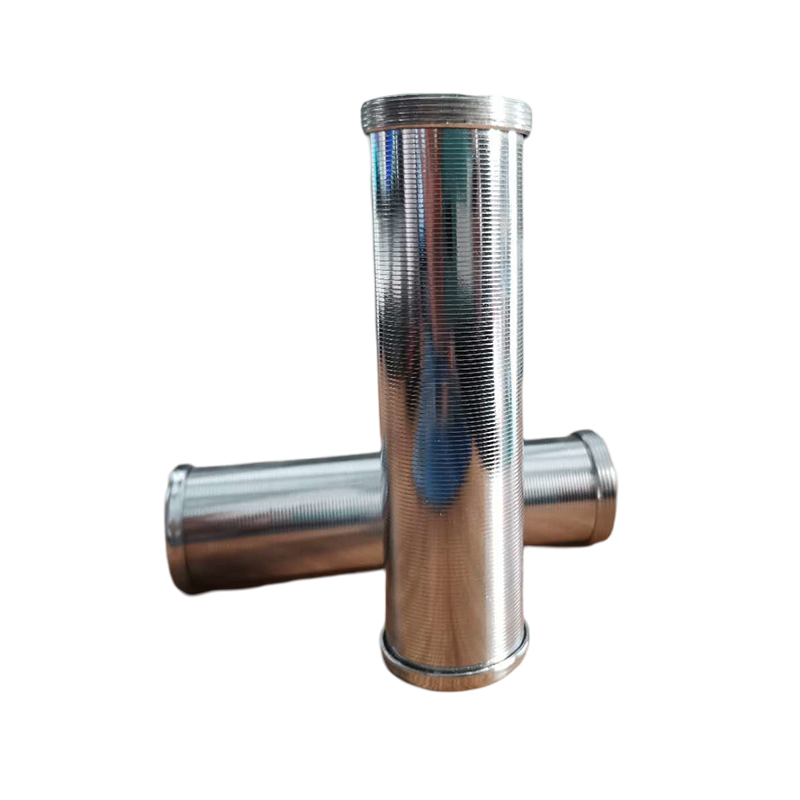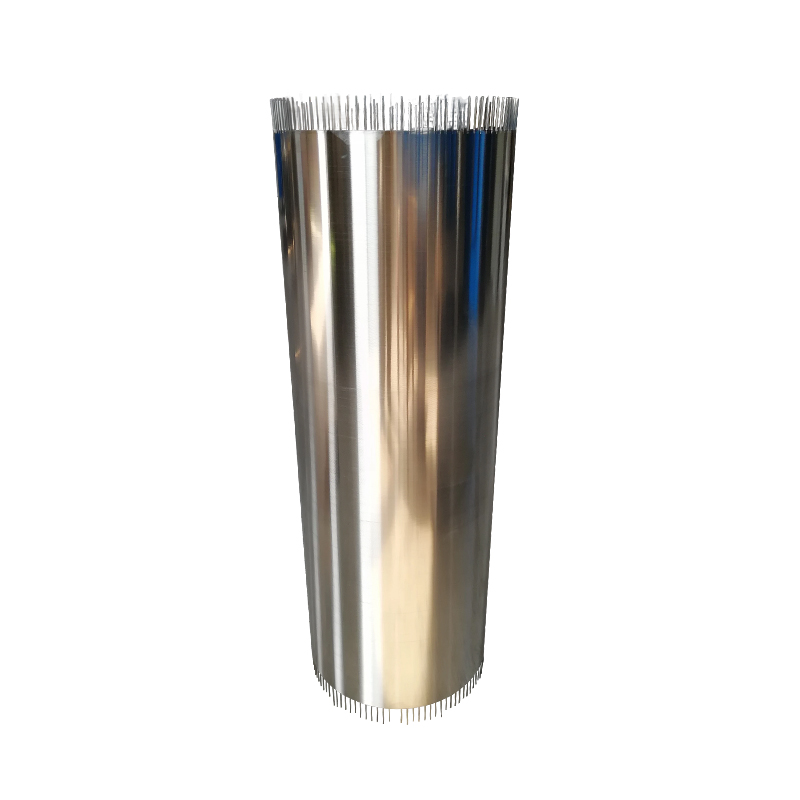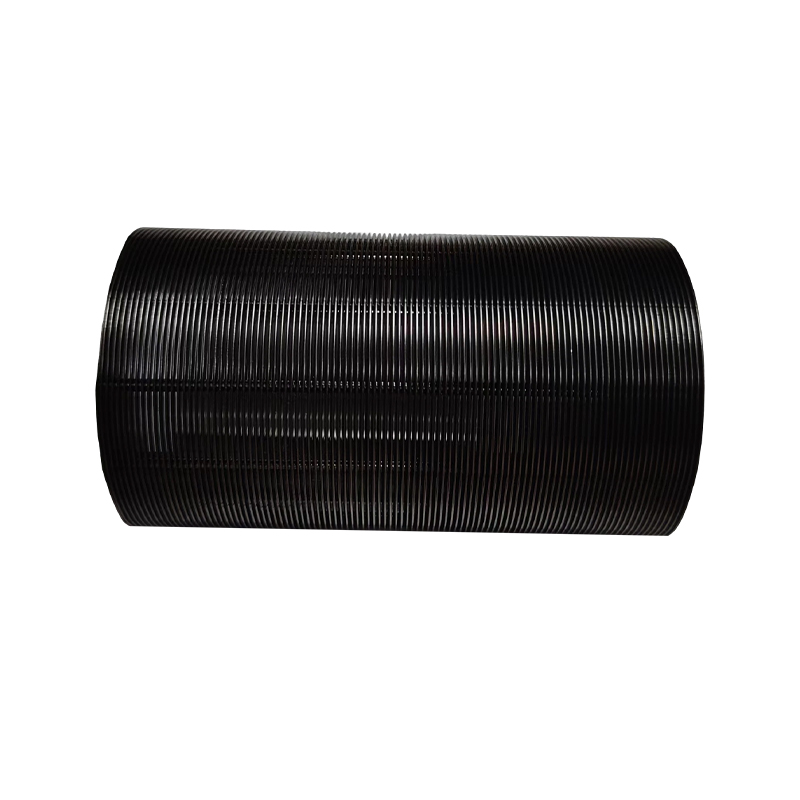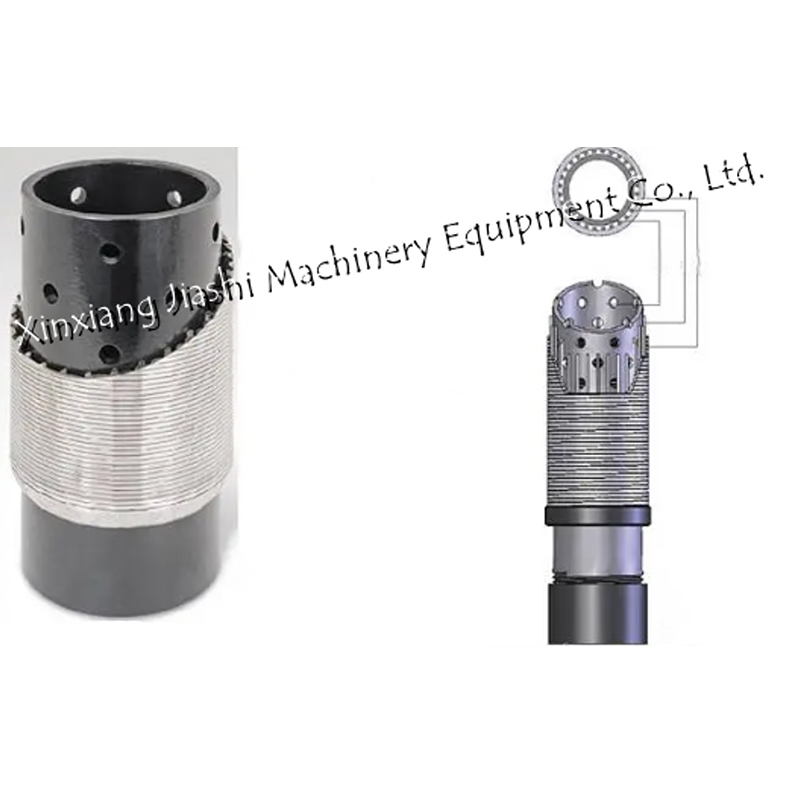How does oil casing maintain a high porosity while improving mechanical strength?
Release Time : 2025-10-08
In fields such as water treatment, oilfield sand control, mine screening, and industrial filtration, screens must simultaneously meet two core requirements: a high porosity to ensure high flow rates and low head loss, and sufficient mechanical strength to withstand high pressure, wear, and long-term operational loads. Traditional screens often struggle to achieve this balance: a high porosity results in structural weakness, while high strength results in poor permeability. Oil casing, with its unique structural design, successfully resolves this contradiction, achieving an organic combination of high throughput and high strength, making it the preferred solution for high-end filtration applications.
1. V-shaped wire wrap: Dual optimization of mechanics and fluid flow
Oil casing is constructed by welding precision-formed V-shaped wire wraps to longitudinal support rods. The V-shaped wire wraps have their tips facing outward, creating a continuous, uniform gap, while the wide bottom surface is securely connected to the support rods. This geometric configuration not only imparts excellent fluid flow properties to the screen but also creates a natural "reinforcement" effect mechanically. The V-shaped cross-section has a high moment of inertia. With the same material usage, its bending and compressive resistance far exceeds that of round or flat wire. When external pressure acts on the screen surface, the V-shaped structure effectively distributes the load across the entire support frame, preventing local deformation or fracture.
2. Continuous Slit Design: A Synergistic Effect of High Openness and Low Flow Rate
The slots in the oil casing are continuous along the axial direction, without the obstruction of nodes found in traditional woven mesh or perforated plates. The openness typically reaches 30%–60%, significantly higher than comparable products. This high openness means greater flow capacity per unit area and lower system energy consumption. Furthermore, the continuous slots evenly distribute the water flow, preventing localized high-speed erosion. More importantly, the water flow creates a "constriction effect" upon entering the V-shaped slots—the flow velocity peaks at the narrowest point of the slot, creating a stable negative pressure zone that helps to "bounce" suspended particles rather than embed them, thereby reducing the risk of clogging. This self-cleaning property further ensures long-term high-throughput operation.
3. Longitudinal Support Rods: Build a Rigid Framework to Resist High-Pressure Impact
The longitudinal support rods are the "backbone" of the oil casing. They are typically made of high-strength stainless steel round or shaped rods, evenly distributed around the circumference. They are securely connected to the V-shaped wire wrap at each intersection using fully automated resistance welding or laser welding. This three-dimensional truss structure significantly enhances the overall rigidity and pressure resistance of the screen. Even in deep wells, with high sand content, or under high-pressure water injection conditions, the screen maintains its shape, preventing deformation that could cause gaps to widen or close. The support rod spacing is precisely calculated to maximize the open area while ensuring strength, achieving an optimal balance between structure and function.
4. Materials and Processing Ensure Long-Term Reliability
Oil casing is commonly manufactured from 304 or 316L stainless steel, offering both corrosion resistance and high strength. The fully automated welding process ensures that each weld is fully fused, free of cold welds, and free of burrs, ensuring structural integrity while preventing secondary contamination of the filtered water. The smooth surface of the V-shaped wire wrap further reduces the likelihood of particle adhesion. In oilfield sand control applications, this design effectively blocks formation sand from invading the screen under high pressure, achieving the combined performance of "blocking, unimpeded flow, and long-lasting" performance.
In summary, oil casing cleverly resolves the traditional conflict between high porosity and high mechanical strength through the mechanical reinforcement of V-shaped wire wrapping, fluid optimization of continuous gaps, and the rigid support of longitudinal support rods. It is more than just a filter element; it is an engineering masterpiece that integrates fluid mechanics, materials science, and precision manufacturing, providing a solid guarantee for efficient and reliable filtration under harsh operating conditions.
1. V-shaped wire wrap: Dual optimization of mechanics and fluid flow
Oil casing is constructed by welding precision-formed V-shaped wire wraps to longitudinal support rods. The V-shaped wire wraps have their tips facing outward, creating a continuous, uniform gap, while the wide bottom surface is securely connected to the support rods. This geometric configuration not only imparts excellent fluid flow properties to the screen but also creates a natural "reinforcement" effect mechanically. The V-shaped cross-section has a high moment of inertia. With the same material usage, its bending and compressive resistance far exceeds that of round or flat wire. When external pressure acts on the screen surface, the V-shaped structure effectively distributes the load across the entire support frame, preventing local deformation or fracture.
2. Continuous Slit Design: A Synergistic Effect of High Openness and Low Flow Rate
The slots in the oil casing are continuous along the axial direction, without the obstruction of nodes found in traditional woven mesh or perforated plates. The openness typically reaches 30%–60%, significantly higher than comparable products. This high openness means greater flow capacity per unit area and lower system energy consumption. Furthermore, the continuous slots evenly distribute the water flow, preventing localized high-speed erosion. More importantly, the water flow creates a "constriction effect" upon entering the V-shaped slots—the flow velocity peaks at the narrowest point of the slot, creating a stable negative pressure zone that helps to "bounce" suspended particles rather than embed them, thereby reducing the risk of clogging. This self-cleaning property further ensures long-term high-throughput operation.
3. Longitudinal Support Rods: Build a Rigid Framework to Resist High-Pressure Impact
The longitudinal support rods are the "backbone" of the oil casing. They are typically made of high-strength stainless steel round or shaped rods, evenly distributed around the circumference. They are securely connected to the V-shaped wire wrap at each intersection using fully automated resistance welding or laser welding. This three-dimensional truss structure significantly enhances the overall rigidity and pressure resistance of the screen. Even in deep wells, with high sand content, or under high-pressure water injection conditions, the screen maintains its shape, preventing deformation that could cause gaps to widen or close. The support rod spacing is precisely calculated to maximize the open area while ensuring strength, achieving an optimal balance between structure and function.
4. Materials and Processing Ensure Long-Term Reliability
Oil casing is commonly manufactured from 304 or 316L stainless steel, offering both corrosion resistance and high strength. The fully automated welding process ensures that each weld is fully fused, free of cold welds, and free of burrs, ensuring structural integrity while preventing secondary contamination of the filtered water. The smooth surface of the V-shaped wire wrap further reduces the likelihood of particle adhesion. In oilfield sand control applications, this design effectively blocks formation sand from invading the screen under high pressure, achieving the combined performance of "blocking, unimpeded flow, and long-lasting" performance.
In summary, oil casing cleverly resolves the traditional conflict between high porosity and high mechanical strength through the mechanical reinforcement of V-shaped wire wrapping, fluid optimization of continuous gaps, and the rigid support of longitudinal support rods. It is more than just a filter element; it is an engineering masterpiece that integrates fluid mechanics, materials science, and precision manufacturing, providing a solid guarantee for efficient and reliable filtration under harsh operating conditions.







